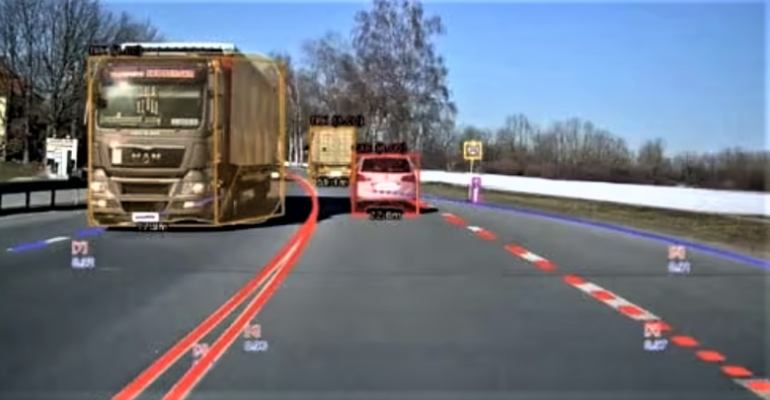Software has been part of the automotive philosophy for many years, particularly with the implementation of advanced driver assistance systems for parking assistance and overall driving. The possibilities through software are nearly endless, and many automakers and other tech companies are making big investments in software to bring about the industry’s next major innovation.
To determine the potential for where the automotive space is going, it’s important to look at the innovations already redefining the driving experience. What do they offer drivers today? Where are each of these innovations going in the near future? What does the long-term potential look like?
Building Levels of ADAS, Automation and Safety
Safety will always be the priority within the automotive space, both from a physical standpoint and a perception/information standpoint. The software innovations of recent years have contributed immensely to vehicular perception and information, and ADAS is right at its center.
From parking assistance to 360-degree detection while driving, ADAS has given drivers the opportunity for better-informed, safer driving. The auto industry has fully embraced ADAS and upheld a range of safety standards and certifications (e.g., ISO, ASPICE, SOTIF, etc.) to ensure optimal software support for drivers.
ADAS is a continually evolving and improving space within itself as well. The industry now sees a majority of its vehicles with SAE Level 1 to Level 2 assistance. Achieving fully autonomous driving technology in consumer vehicles at Levels 4 and 5 appears to remain a distant goal. However, OEMs are making progress in advancing the maturity of ADAS systems. This is possible due to the widespread availability of sensors, including cameras, radar and lidar in select premium car models. Additionally, the trend of in-vehicle computing is shifting toward the use of a more powerful digital control unit, which enables the application of advanced multimodal sensory fusion techniques.
Evolving the In-Cabin Experience: Connectivity, Immersion and Infotainment
With today’s elevated levels of software already in vehicles, the possibilities for in-cabin experiences have also become a new focal point. Drivers and passengers are more connected to the outside world than ever before – whether through entertainment/content streaming, calling or outside object detection.
This brings waves of information to the cabin like never before. And therein lies both the opportunity and challenge: The information is there, but it’s all about determining the next step and best ways for drivers and passengers to take in that information.
Console displays/screens are the current standard for newer vehicles, yet many in tech and auto are exploring even more immersive ways to display and navigate. These new approaches are particularly compelling when combined with ADAS. At L3 and higher levels of autonomy, drivers will have more opportunity to interact with the infotainment system safely. Additionally, the vehicle's windshield is an ideal platform for implementing non-headset augmented-reality technologies which are struggling to find an area to establish their value.
Defining the Software-Defined Future
With all the above said, it raises the question of what this all means for our software-defined automotive future. The past few years have seen a huge upward trend in advancing ADAS further and exploring automation. What does this mean for drivers (and passengers) and their auto experience? Will fully autonomous driving be the way of the future?
 Much of this depends on what the mass-market consumer wants out of their experience and, always, the priority of safety using the innovations and tech of the day. The perception of infotainment technology for the automotive industry is considered a vital component of the SDV stack because it plays a crucial role in enabling safer driving and providing an enhanced in-cabin user experience. To ensure that the rapidly evolving ADAS and infotainment technologies can be brought to market as quickly as possible, active collaboration and development of SDV platforms are required.
Much of this depends on what the mass-market consumer wants out of their experience and, always, the priority of safety using the innovations and tech of the day. The perception of infotainment technology for the automotive industry is considered a vital component of the SDV stack because it plays a crucial role in enabling safer driving and providing an enhanced in-cabin user experience. To ensure that the rapidly evolving ADAS and infotainment technologies can be brought to market as quickly as possible, active collaboration and development of SDV platforms are required.
Jack Sim (pictured, above left) is the chief technology officer at StradVision, where he leads the team of developers of SVNet perception tech software for ADAS.





